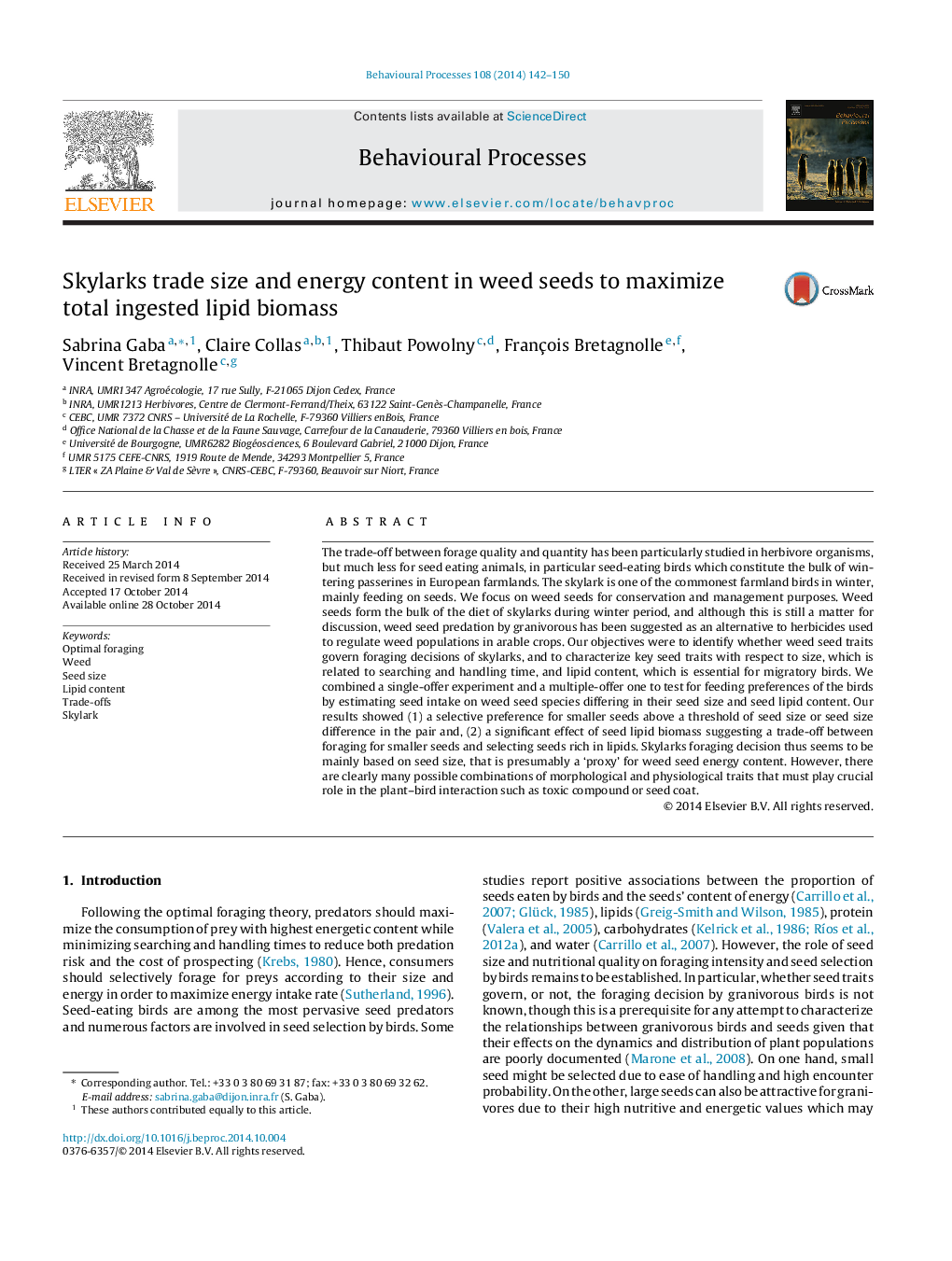| کد مقاله | کد نشریه | سال انتشار | مقاله انگلیسی | نسخه تمام متن |
|---|---|---|---|---|
| 2426703 | 1553171 | 2014 | 9 صفحه PDF | دانلود رایگان |

• We aim at identifying if weed seed traits govern foraging decisions of skylarks.
• We select weed seed based on their size and lipid content.
• We run single-trail and multiple-trial experiments to estimate seed intake.
• Our results suggest a trade-off between foraging for smaller or richer seeds.
• Seed size seems to be a proxy of seed energy content for skylarks foraging decision.
The trade-off between forage quality and quantity has been particularly studied in herbivore organisms, but much less for seed eating animals, in particular seed-eating birds which constitute the bulk of wintering passerines in European farmlands. The skylark is one of the commonest farmland birds in winter, mainly feeding on seeds. We focus on weed seeds for conservation and management purposes. Weed seeds form the bulk of the diet of skylarks during winter period, and although this is still a matter for discussion, weed seed predation by granivorous has been suggested as an alternative to herbicides used to regulate weed populations in arable crops. Our objectives were to identify whether weed seed traits govern foraging decisions of skylarks, and to characterize key seed traits with respect to size, which is related to searching and handling time, and lipid content, which is essential for migratory birds. We combined a single-offer experiment and a multiple-offer one to test for feeding preferences of the birds by estimating seed intake on weed seed species differing in their seed size and seed lipid content. Our results showed (1) a selective preference for smaller seeds above a threshold of seed size or seed size difference in the pair and, (2) a significant effect of seed lipid biomass suggesting a trade-off between foraging for smaller seeds and selecting seeds rich in lipids. Skylarks foraging decision thus seems to be mainly based on seed size, that is presumably a ‘proxy’ for weed seed energy content. However, there are clearly many possible combinations of morphological and physiological traits that must play crucial role in the plant–bird interaction such as toxic compound or seed coat.
Journal: Behavioural Processes - Volume 108, October 2014, Pages 142–150